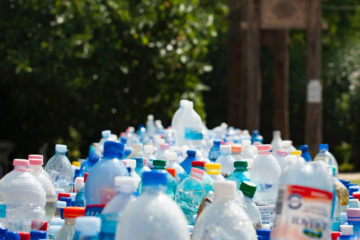Climate Change and Hunger
World hunger has risen for a third year according to the UN, the total number of people who face hunger has increased by 15 million since 2016.
the situation is worsening in south America, central America and most region of Africa.
While malnutrition and food insecurity begin at the household level, hunger is EVERYONE’S BUSINESS.
The causes of food insecurity are complex, climate change is the major reason. Average global temperatures have increased even more quickly. Climate change is increasing the severity and frequency of the extreme weather events such as powerful storm and drought. As a result, some regions are getting wetter and some are getting drier.
Agriculture is one of industries is most vulnerable to climate change. Crops and livestock are extremely sensitive to temperature and precipitation. Agriculture is the Goldilocks industry; the weather should not be too hot or too cold and rainfall must be just right.
Producing enough food for everyone in the world depends heavily on climate, this means that it will be impossible to curb hunger without preparing for and adapting for climate change
How to feed The World after Climate Change
Over the next 50 years, climate change will transfer the world in ways we have only begun to imagine, humans have changed the weather in this planet and that will change everything especially how to grow food. Meanwhile, global demand for food will be increasing and human population as well.
There was an argument that the more heat and drought resistant seeds are what is needed to cope with climate change.
Some research foundations and agriculture scientists in Genetically modified organisms (GMO) joined to research about this technology which is developing seeds for improved and climate adapted varieties, most peer reviewed research has found that GMO seeds will revolutionize in the face of climate change.
On the other hand, More agriculture experts are saying that we need to shift to ecological agriculture which avoids applying chemical fertilizers to soil, instead using compost and manure to increase the soil’s fertility and ability to retain water which is key advantages against hot and dry weather
In western Africa for instance, thousands of poorest farmers are capturing scarce rainfall and renewing soil fertility by growing trees amid their fields. Despite enduring some of the hottest and driest weather on earth, these farmers have returned greens for 12.5 million acres of land, water supply underground and crop yields have doubled and tripled.
What is The Conservation Farming Program?
Conservation farming is an approach that enable farmers to increase soil fertility and water resource management and provide highly successful technique fighting against the climate change and the drought in that area. Most farmers in the program are women, also it has helped to improve economic growth.
The farmers learn how to cover the ground with mulch from evaporating and to hoe the soil in preparation for seeds planting.
This innovative technique is ensuring farmers living in drought-stricken areas are able to feed their families, strengthen household food security and decreasing their dependency on food aid in the long-term.
Help make sustainable plants all over the world…



0 Comments